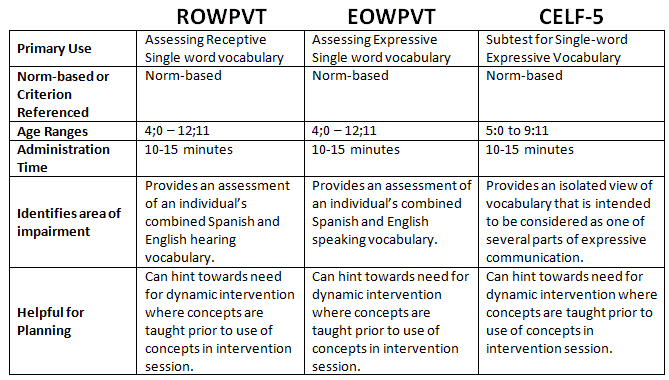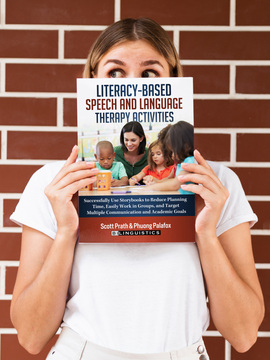Working to improve vocabulary retention is extremely important in the academic setting. If a child uses, remembers, or lists new vocabulary, then general education teachers have data to show that a child is learning. Many of their formal tests, quizzes, and assignments are arranged around the “vocabulary that a child should know.”
However, with a child who has low vocabulary, how do we know if he is struggling because of:
- Limited exposure (Socio-economic Status)
- Second language influence
- Language disorder
- Learning disability
In each case the outcome can look the same. A child is asked to name an object and he does not provide a correct answer. To make matters worse, our vocabulary tests, when used in isolation, do little better and may cause children from diverse backgrounds to be over-identified for special education.
Common Available Vocabulary Measures
We can improve vocabulary retention by:
- Knowing which developmental norms are true of all children, regardless of language.
- Using dynamic assessment to increase vocabulary retention.
Semantics, Semantics: Early Bilingual Vocabulary Development
How is vocabulary development affected by learning two languages at an early age? While differences begin to emerge after age 4, there are quite a few developmental similarities at the younger ages. Here are a few:
Vocabulary
- 12 months – first words (usually labeling familiar objects, actions, and properties in child’s environment)
- 15 months – 4-6-word vocabulary
- 18 months – 20-50-word vocabulary
- 24 months – 200-300 word vocabulary
- 36 months – roughly 1000 words
Overextensions
- Saying “dog” for all four-legged animals
Underextensions
- Saying “blankee” only for one particular blanket
Bilingual children develop early vocabulary at the same rate as monolingual children (Pearson, 1993)
Early language milestones are similar (Pearson and Fernandez, 2001)
- single words
- lexical spurt
- 2-word phrases
Conceptual scores are similar (Pearson, 1998)
- This means that if you test a child including all vocabulary expressed in both languages, the combined number of concepts is the same as what we see monolingual children produce. The is because children learn the vocabulary related to the environment. For example, numbers and colors may be in English (school) and clothes and food (home) in Vietnamese.
- “Conceptual” refers to only counting each concept once. For example, you would only give credit for one word (concept) if a child said both “gato” and “cat.”
Now that we know a little a bit about developmental norms, we can move on to improve vocabulary retention. Tune in next week for part 2: 6 Steps to Increase Vocabulary Retention.
Also see ASHA’s 5 Tips to Maximize Your Vocabulary Instruction
Want to improve how your students grow their vocabulary? Check this course out.





